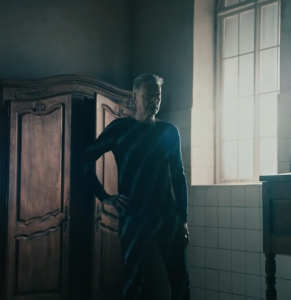
With a new album released less than a week ago on his 69th birthday, few expected David Bowie to leave us so suddenly. From the outside, Bowie seemed as vivacious and artistic as always. But unbeknownst to many of his fans, the singer had been battling cancer for the past 18 months. His fight finally ended quietly on Sunday, January 10.
Bowie was the kind of musician who lived his art through his life, like two sides of the same coin. There was his stage persona and his real life, permanently intertwined and evolving together.
His death came as a shock to the world, but in the days following, we are already finding hidden truths in his final album, “Blackstar.” Bejeweled skull artwork, hospital beds and musings on heaven are scattered throughout the album. Bowie was the kind of musician who lived his art through his life, like two sides of the same coin. There was his stage persona and his real life, permanently intertwined and evolving together.
When Bowie sang about deep space exploration in the 1960s, he dressed, spoke and behaved like an alien, as if he were an alien walking among us on Earth. When he sang “Ashes to Ashes” in a classic operatic sad clown costume, he was saying goodbye to the extravagant lifestyle he lived in the 1970s, his art once again mirroring his life.
Two days after the world celebrated his birthday and his latest work, he silently shrugged off his mortal coil, leaving all of us with an eternal goodbye wish.
It’s hard to listen to “Blackstar” and watch the video for its track “Lazarus” without thinking about these parallels. Bowie had been aware of his terminal illness for more than a year, while he was recording “Blackstar,” so it would be fitting for him to use this album as his epitaph. And like a true artist, Bowie seemed to pick the perfect moment for his swift exit offstage. Two days after the world celebrated his birthday and his latest work, he silently shrugged off his mortal coil, leaving all of us with an eternal goodbye wish.
“Lazarus” opens with the line, “Look up here, I’m in heaven!” Perhaps no one can say for sure if Bowie knew he would be dead soon after the song’s release, but the line has an especially poignant meaning in the wake of his death. The message stays true as Bowie rambles on about his view of the world from above. As in most of his songs, he speaks in allusion and metaphors, talking about leaving behind his cellphone and having nothing left to lose. Some of these lines seem inane and almost childish, but they represent many of the odd, seemingly inappropriate thoughts we have in response to death. It presents Bowie as most of us remember him: quirky, but profoundly deep and artistic.
The video itself is also a bit difficult to watch, knowing that Bowie died not long after it was filmed. It features Bowie lying in a hospital bed with bandages wrapped around his head, buttons replacing his eyes. It conjures up images of loved ones placing coins on their dead relatives to bring them good fortune in the afterlife. Even the song title is steeped in death metaphors, “Lazarus” being a biblical character who rose from the dead.
Toward the end of the song, Bowie sings, “You know I’ll be free. Just like that bluebird. Now, ain’t that just like me?”
It certainly is.
Take a look at David Bowie’s video for “Lazarus” below, or read the full lyrics here.

 The Death of David Bowie Reflected Through “Lazarus”
The Death of David Bowie Reflected Through “Lazarus”



 First the Wealth Gap, Now the U.S. Has a Growing Health Gap
First the Wealth Gap, Now the U.S. Has a Growing Health Gap
 How to Comfort A Dying Loved One
How to Comfort A Dying Loved One
 Our Annual Seven Holiday Gifts for Someone Who Is Grieving, 2024 Edition
Our Annual Seven Holiday Gifts for Someone Who Is Grieving, 2024 Edition














